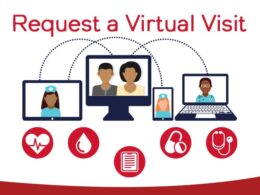The Telegraph
February 23, 2022
The NHS plans to treat up to 25,000 hospital patients at home in “virtual wards” to help clear the backlog caused by the pandemic, the “living with Covid” plan has revealed.
Patients will be offered acute clinical care at home, including remote monitoring and treatment, as an alternative to hospital stays.
Consultants or GPs will review patients daily via digital platforms and phone calls.
In some cases, patients will be provided with a wearable device to continuously monitor and report their vital signs.
The NHS has set a national target of 40 to 50 virtual beds per 100,000 population, which equates to about 25,000 beds across England, according to the “living with Covid” plan published this week.
More than 53 virtual wards are already in use providing 2,500 beds.
The document said: “The use of ‘virtual wards’ and ‘hospital at home’ models of care have ensured that patients can be safely cared for in their own homes and that additional bed capacity can be freed up in hospitals.”
“The use of ‘virtual wards’ and ‘hospital at home’ models of care have ensured that patients can be safely cared for in their own homes and that additional bed capacity can be freed up in hospitals.”
Originally published at https://www.telegraph.co.uk on February 22, 2022.
What are Virtual Wards? (england.nhs.uk)
Virtual wards
Virtual wards allow patients to get the care they need at home safely and conveniently, rather than being in hospital.
Virtual wards are in place in many parts of the country, such as COVID virtual wards. People with other conditions can also be treated in a virtual ward, for example people living with frailty and people with acute respiratory infection.
The NHS is increasingly introducing virtual wards to support people at the place they call home, including care homes. In a virtual ward, support can include remote monitoring using apps, technology platforms, wearables and medical devices such as pulse oximeters. Support may also involve face-to-face care from multi-disciplinary teams based in the community, which is sometimes called Hospital at Home.
To support Integrated Care Systems (ICSs) and service providers to establish or expand virtual wards, guidance for two high priority pathways have been produced – acute respiratory infection virtual wards and Hospital at Home for those with frailty.












